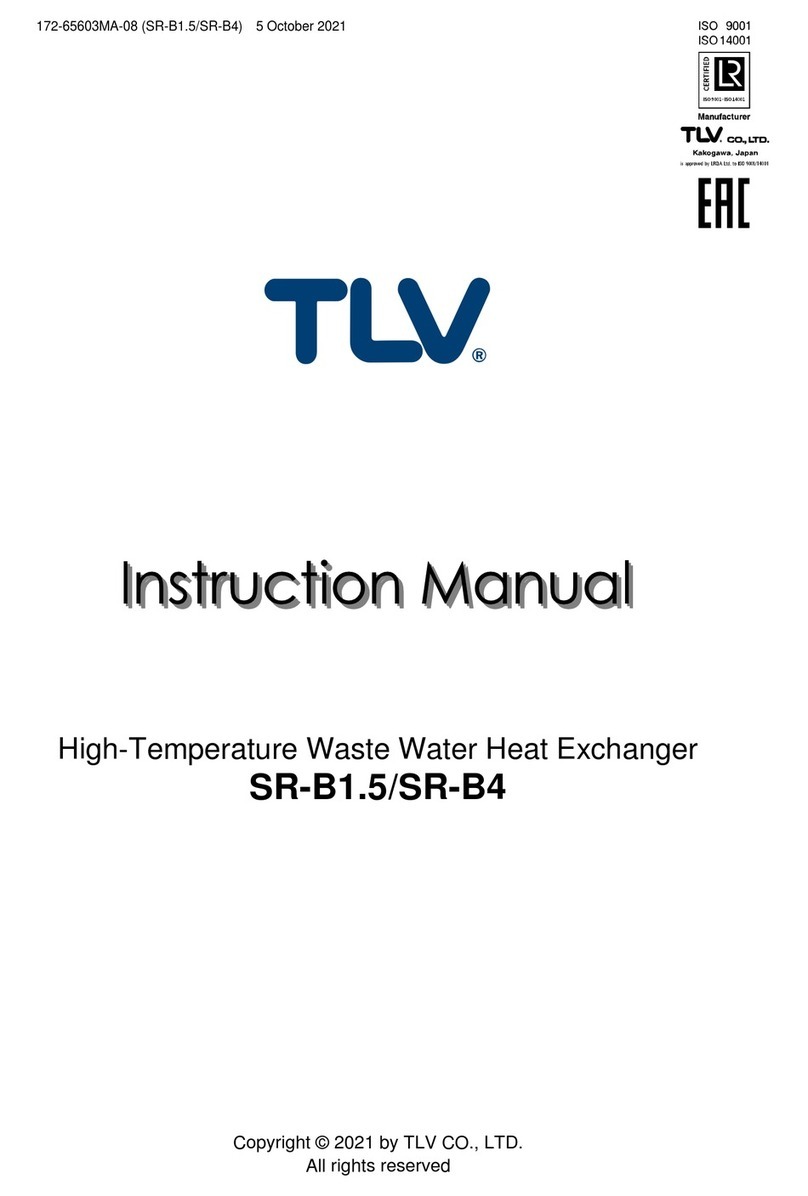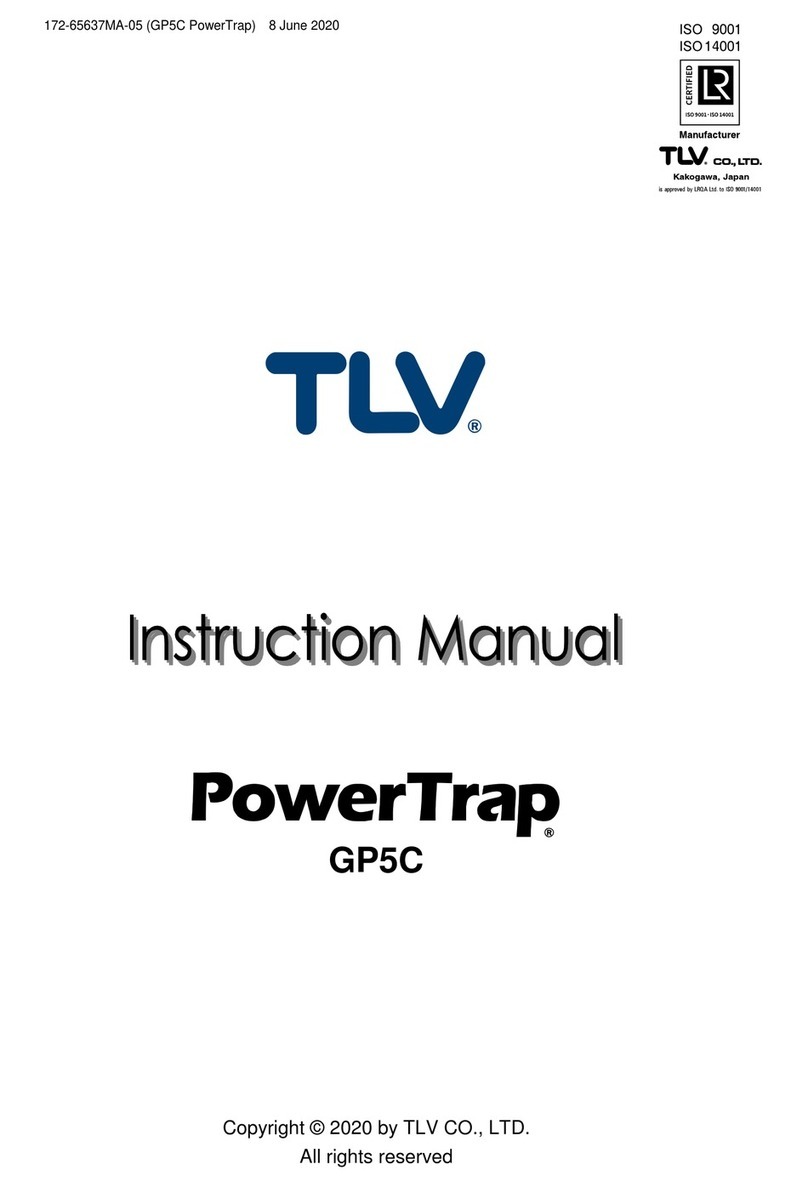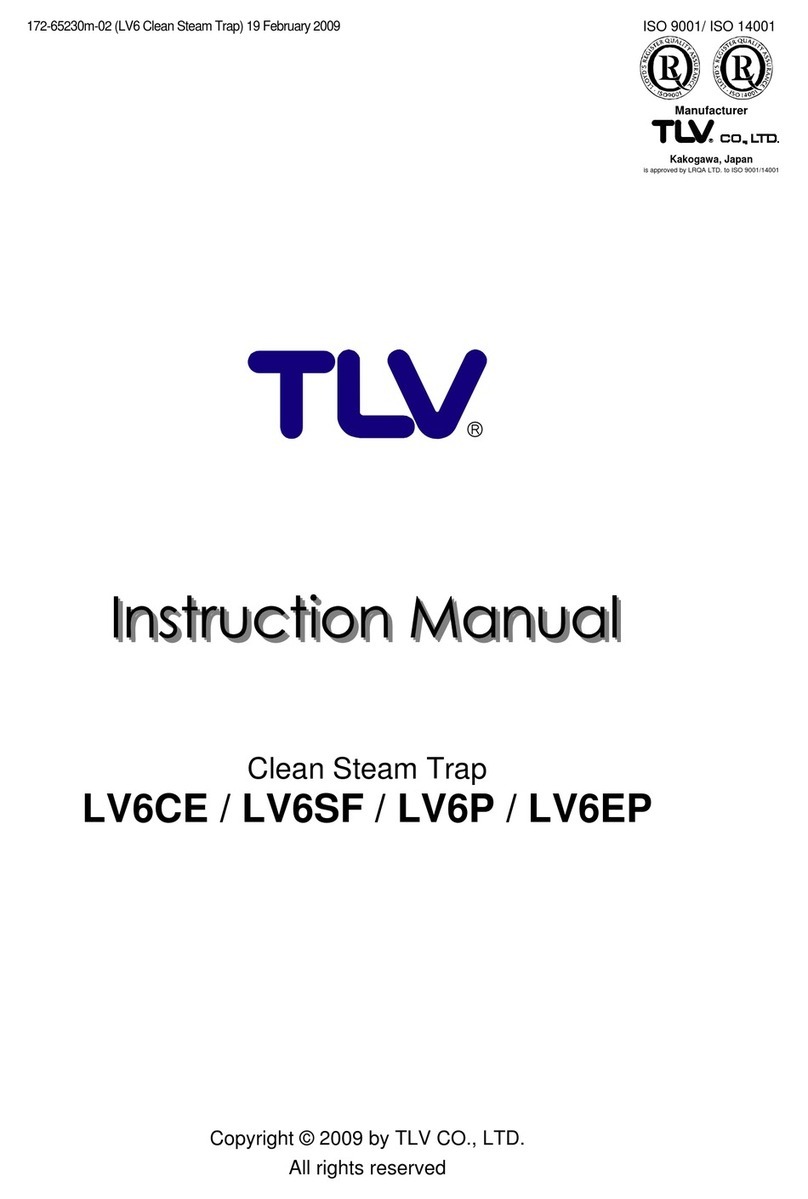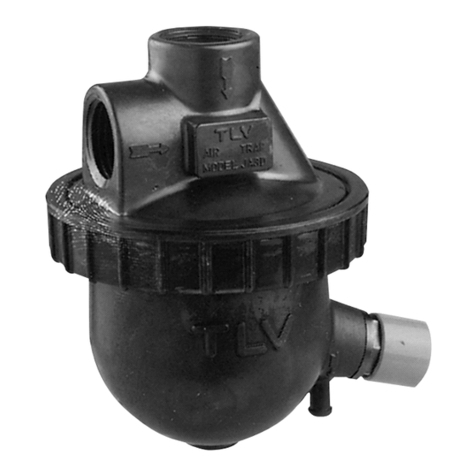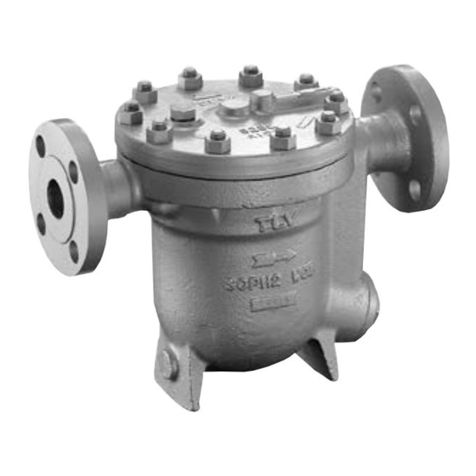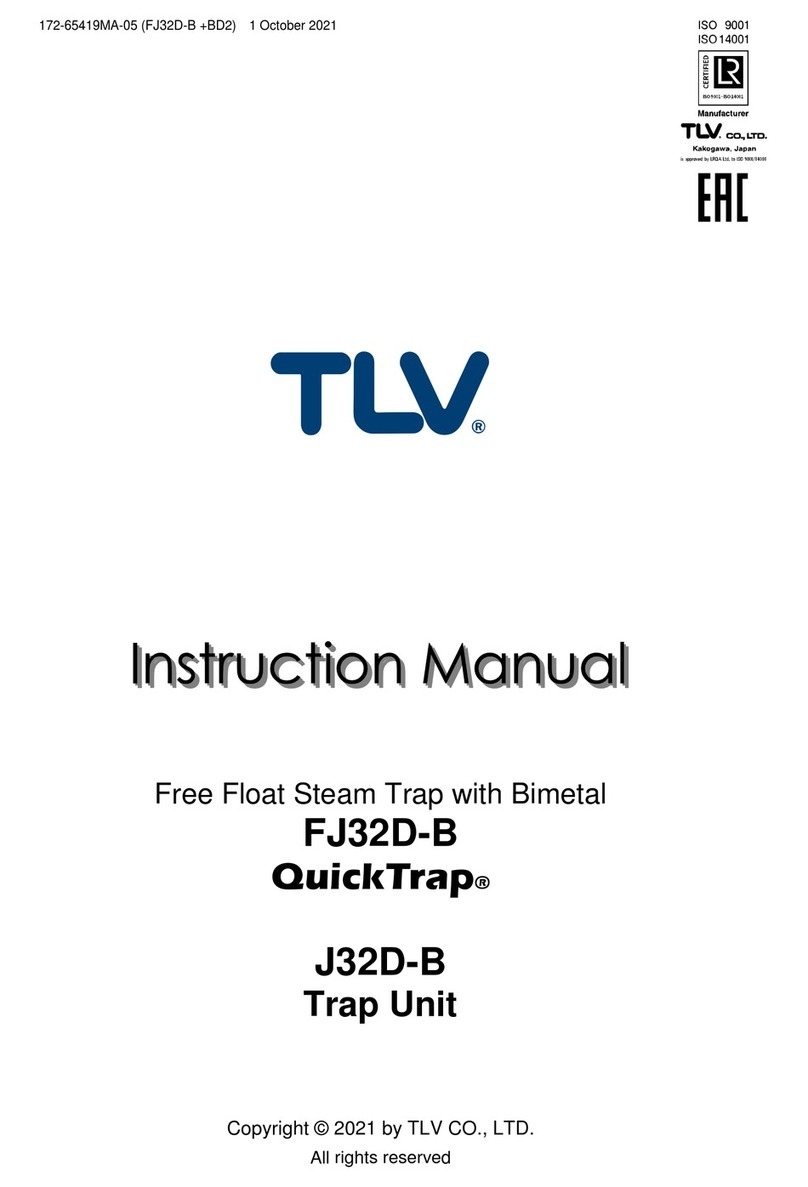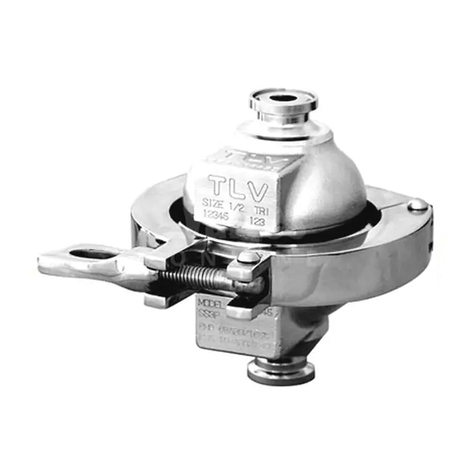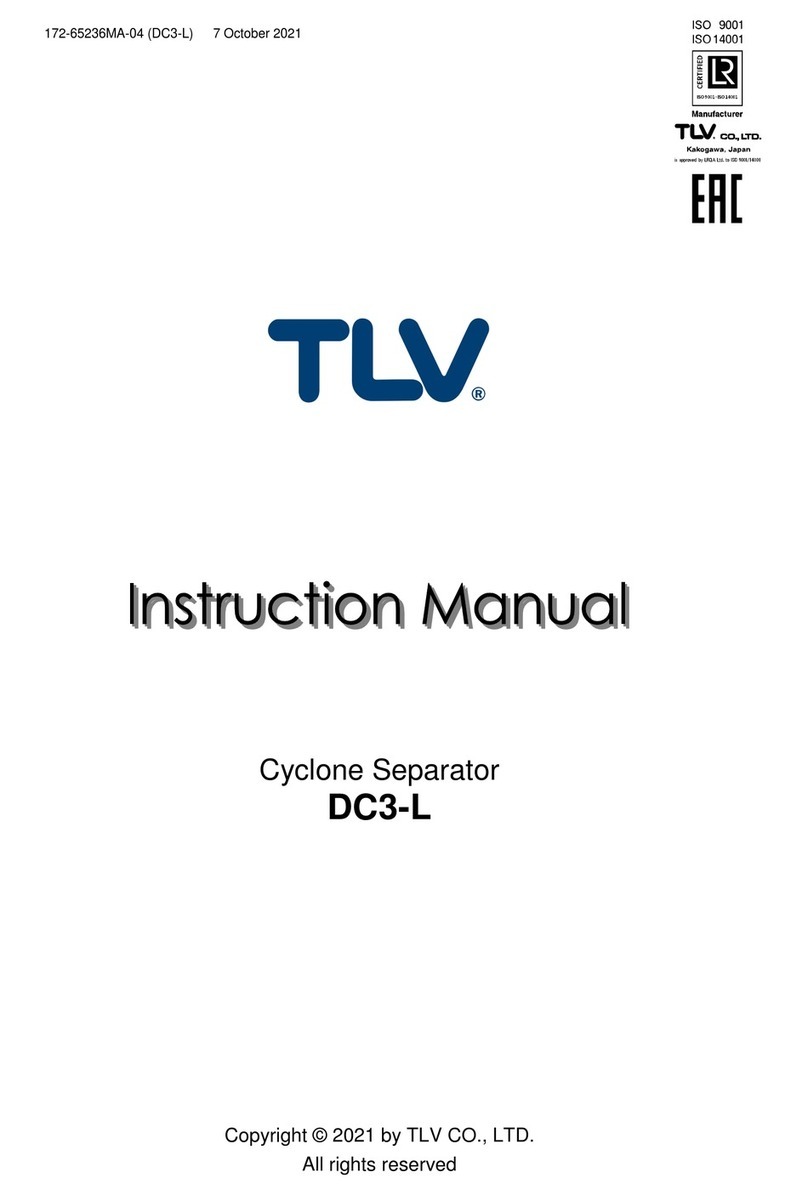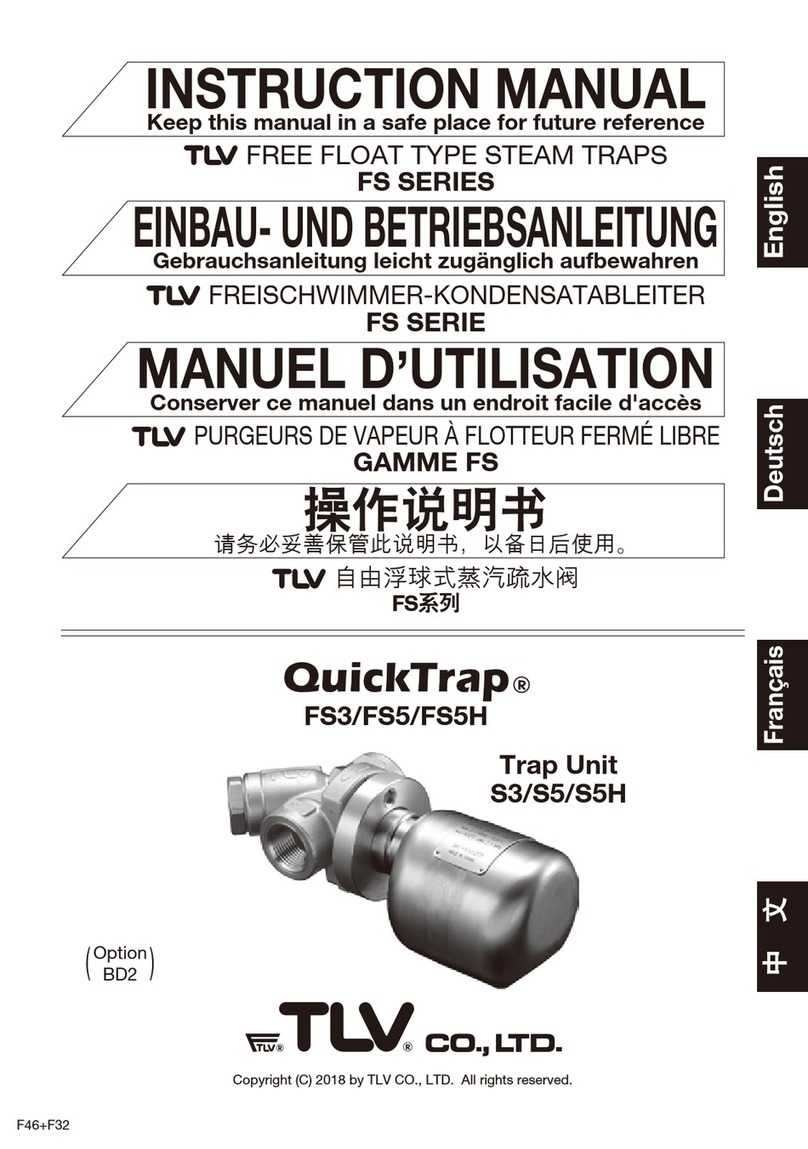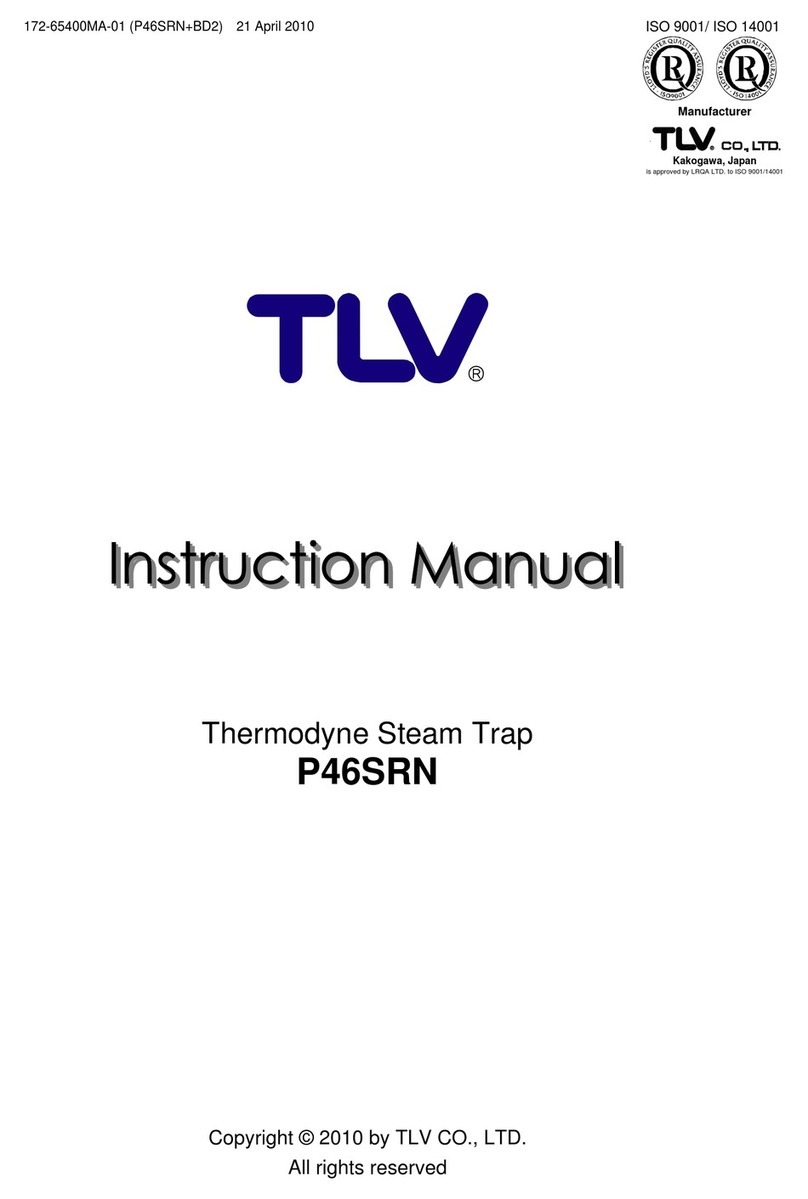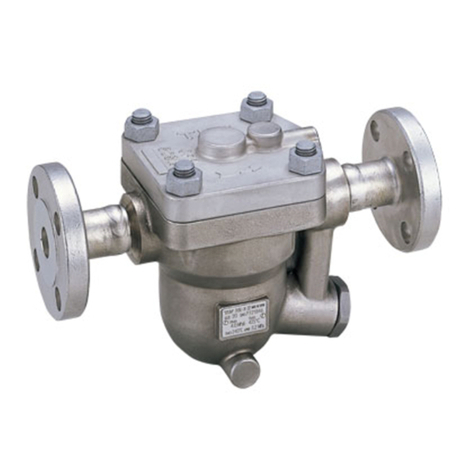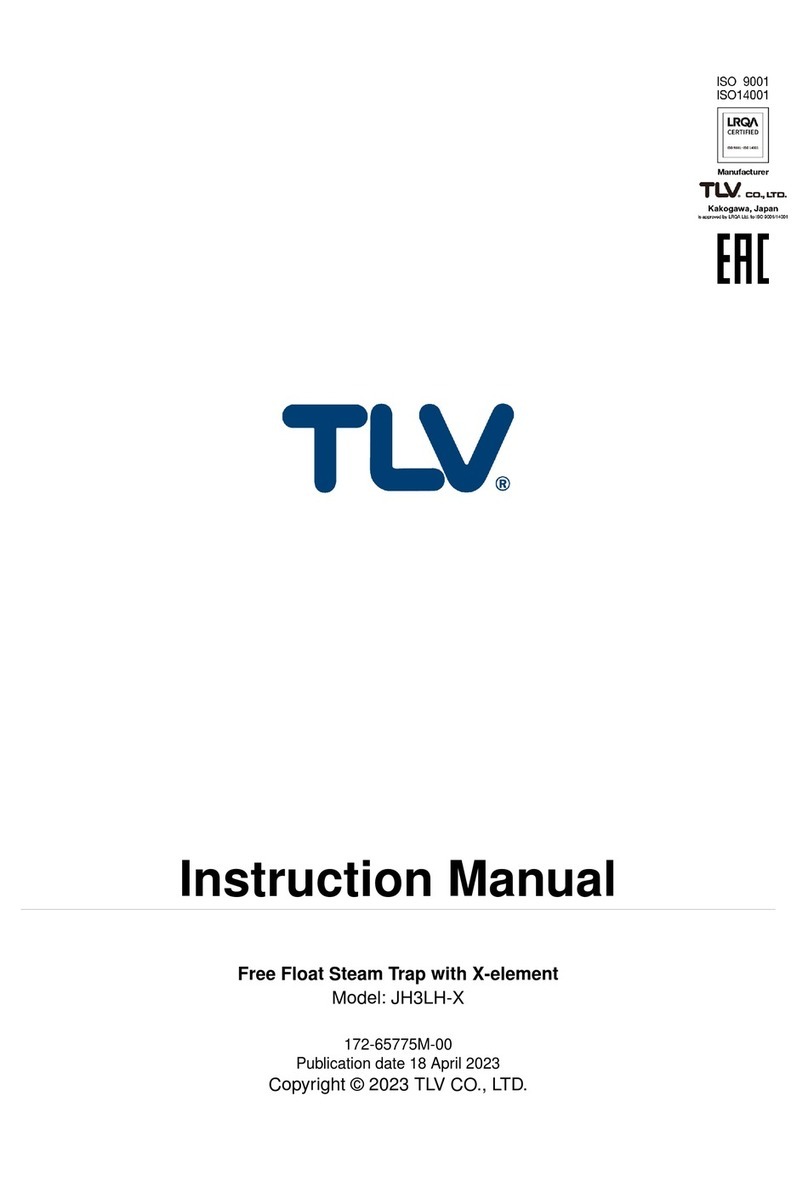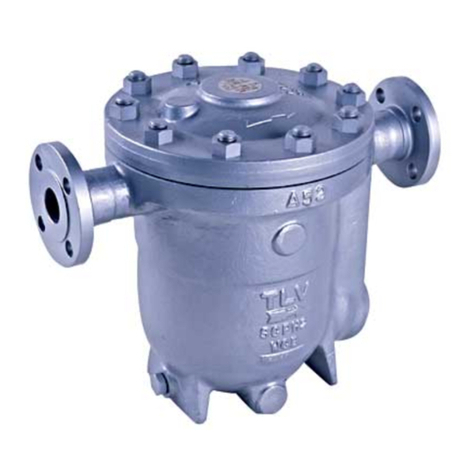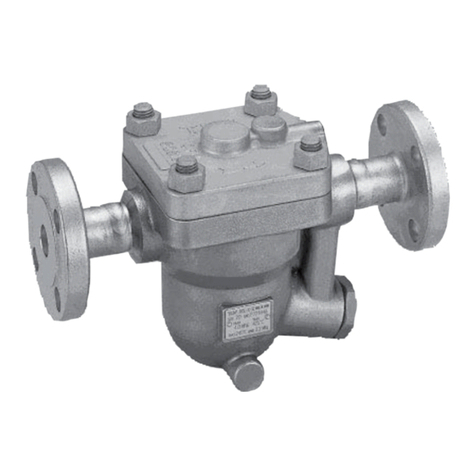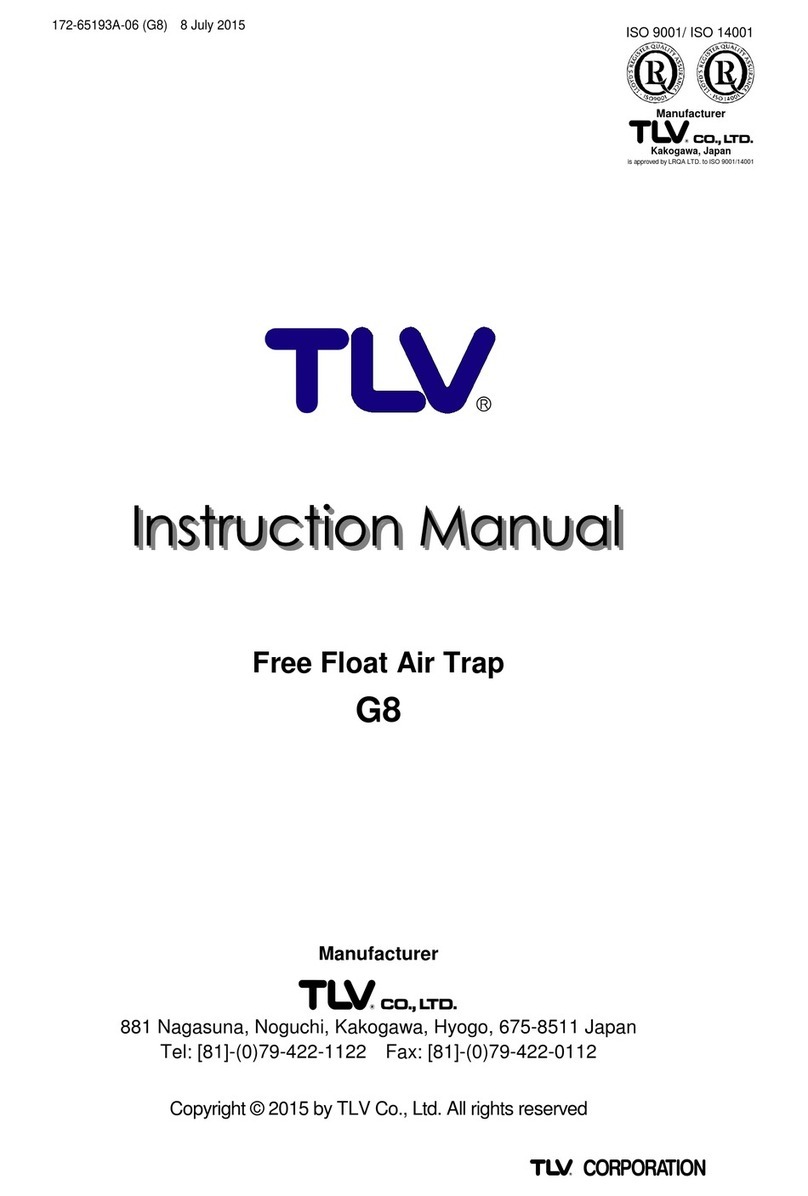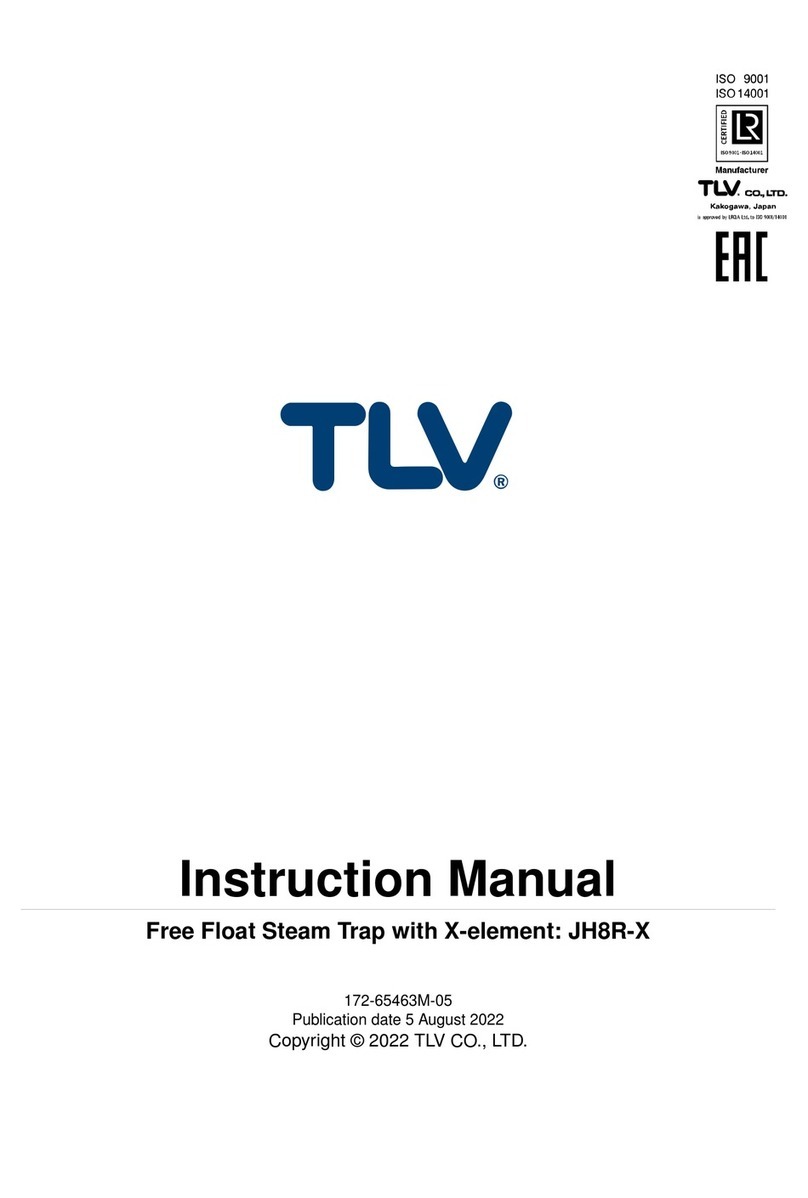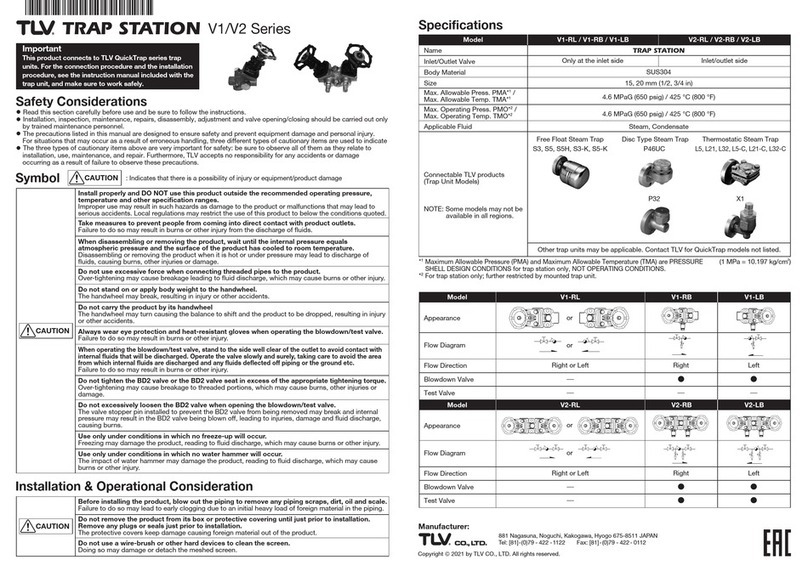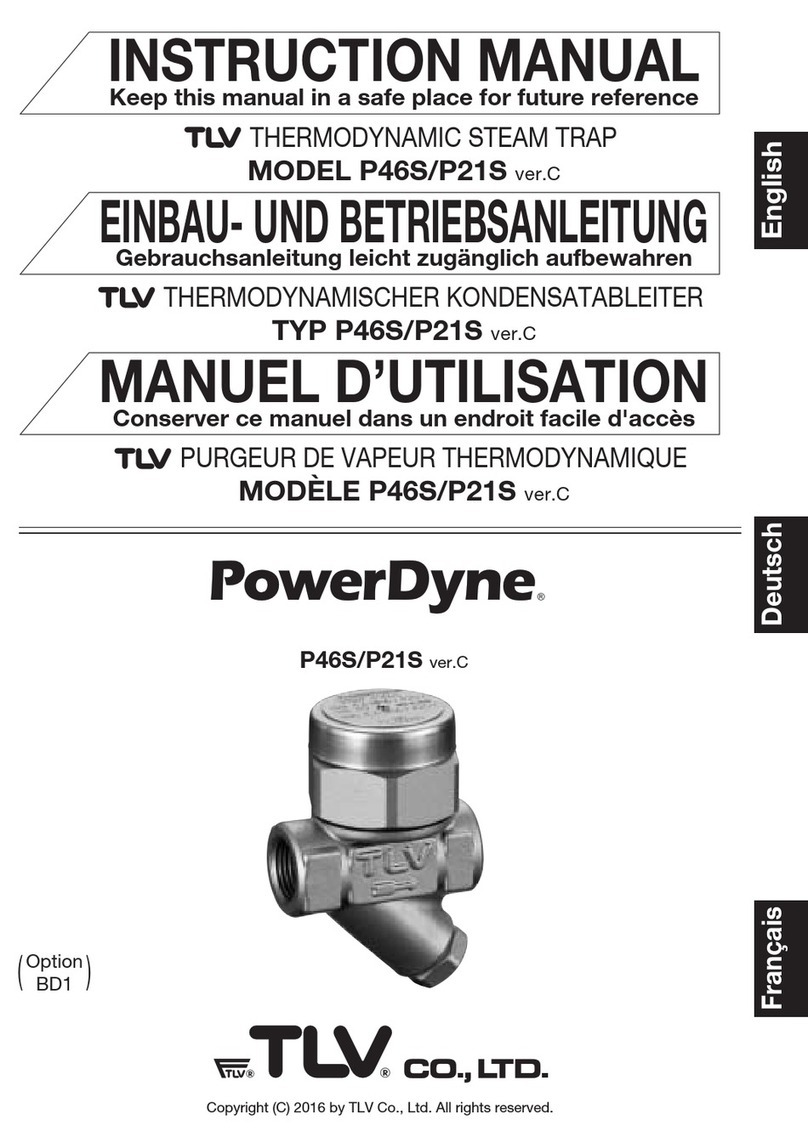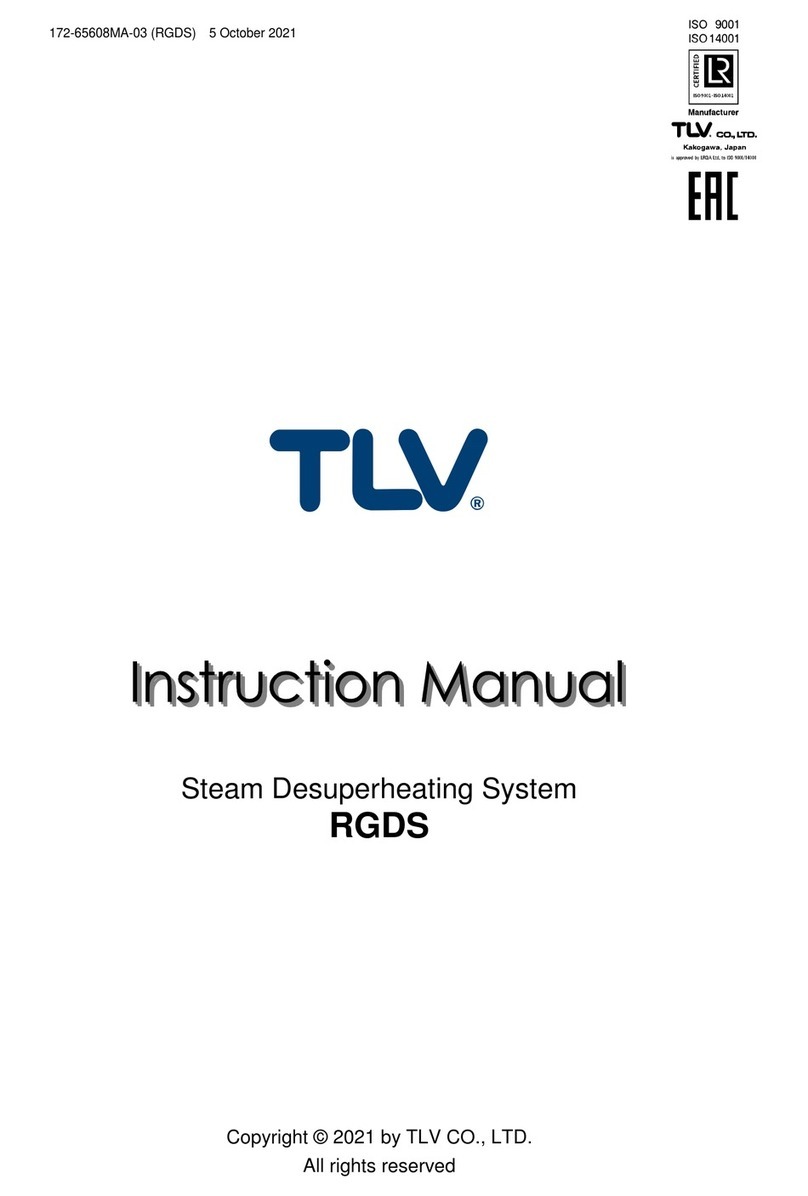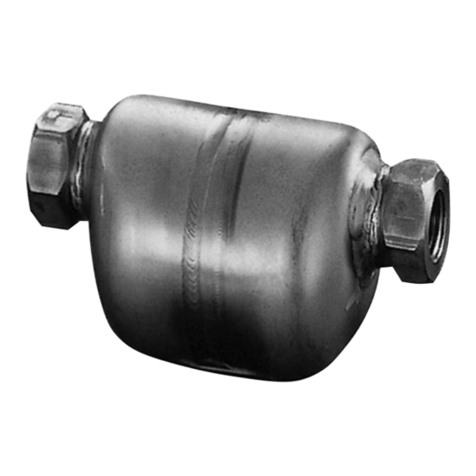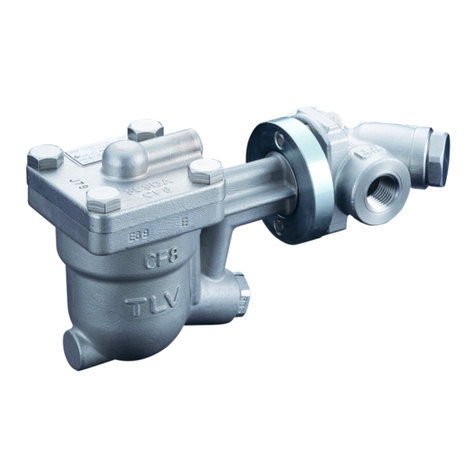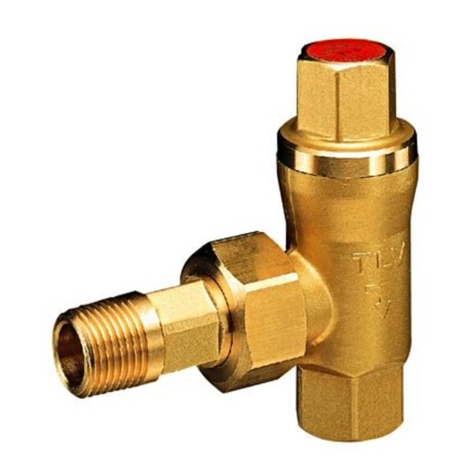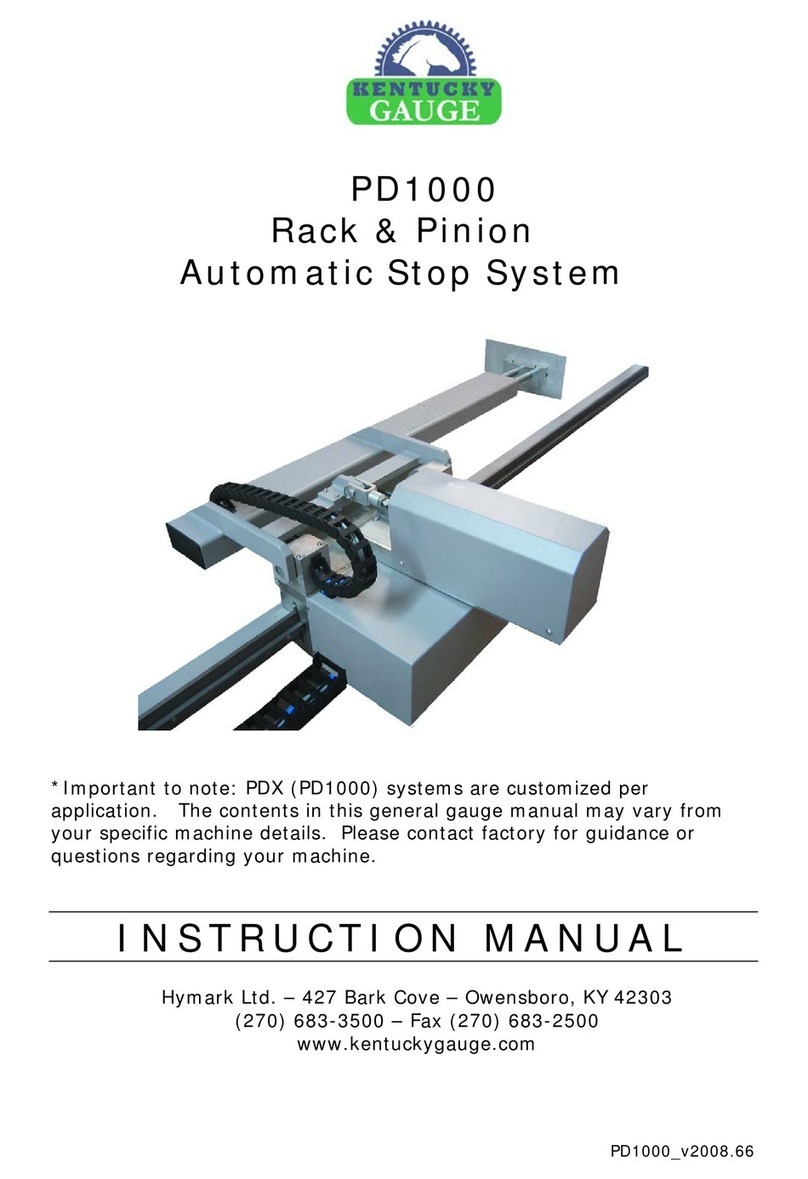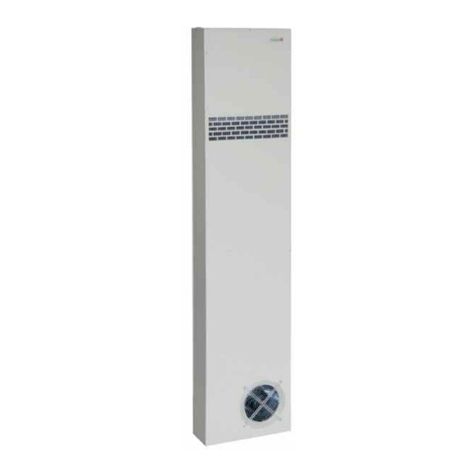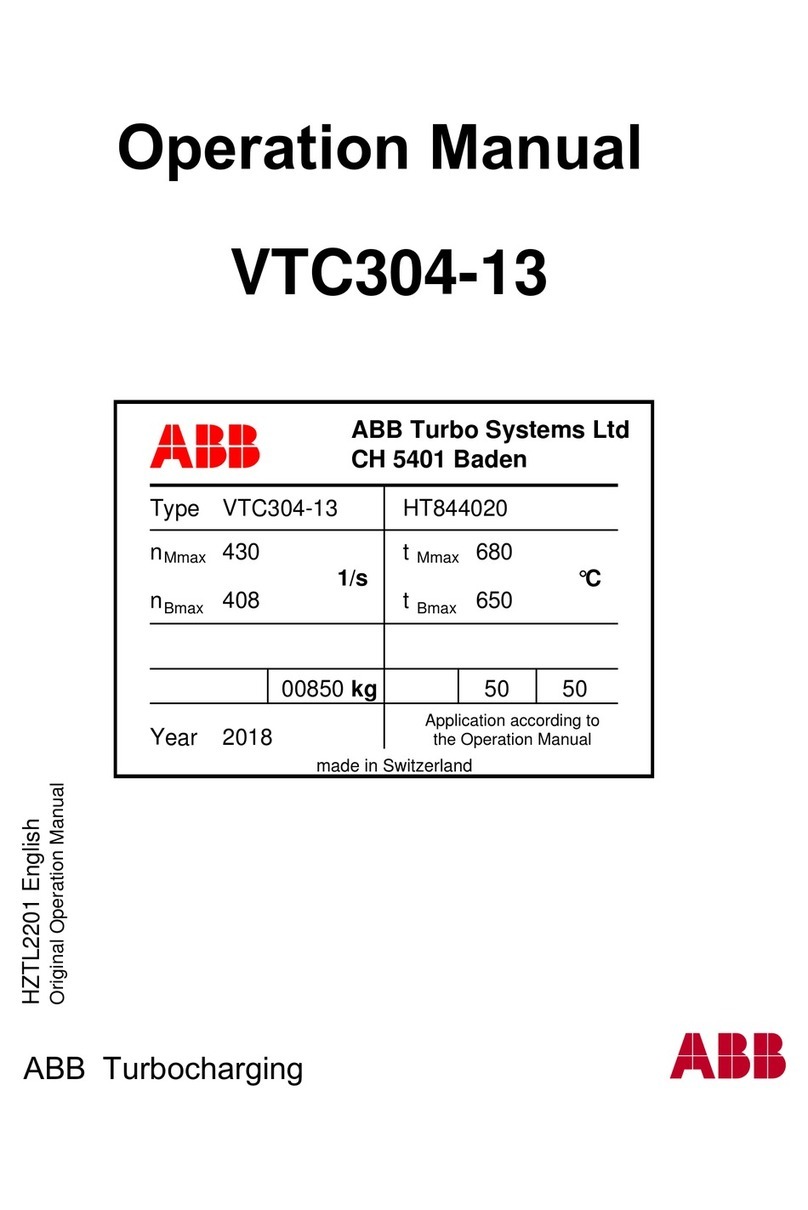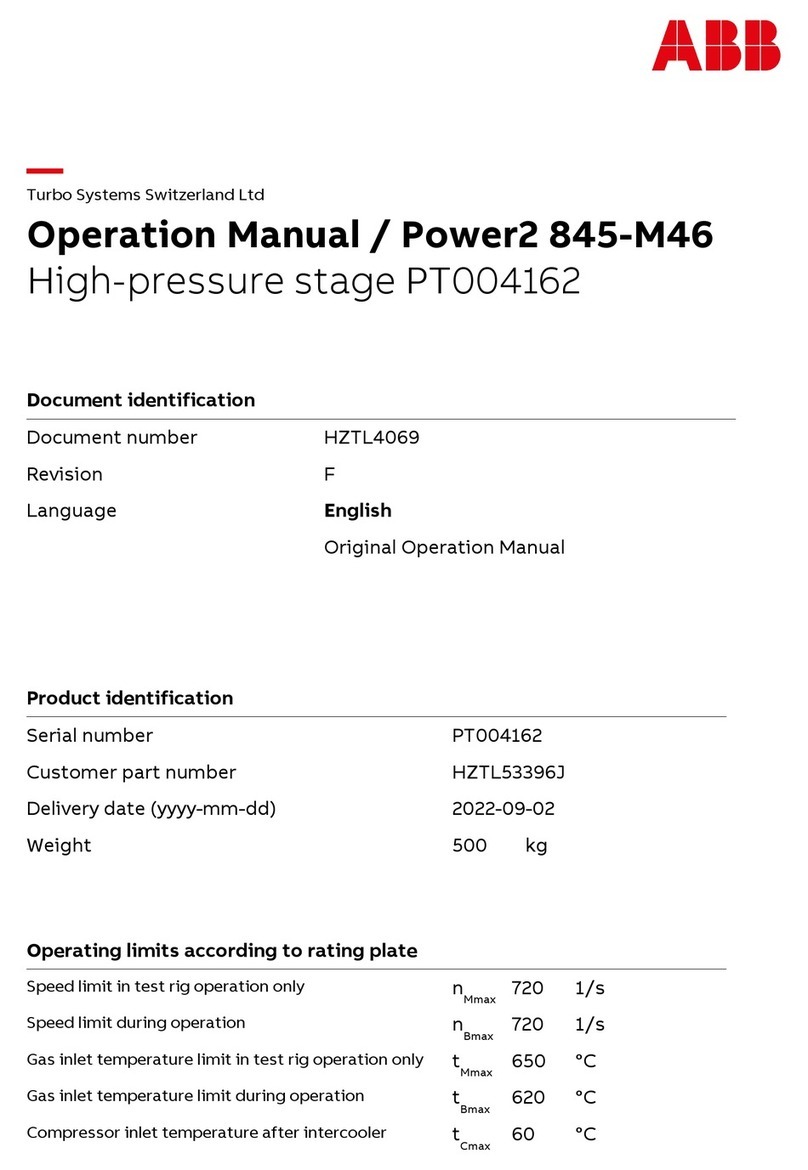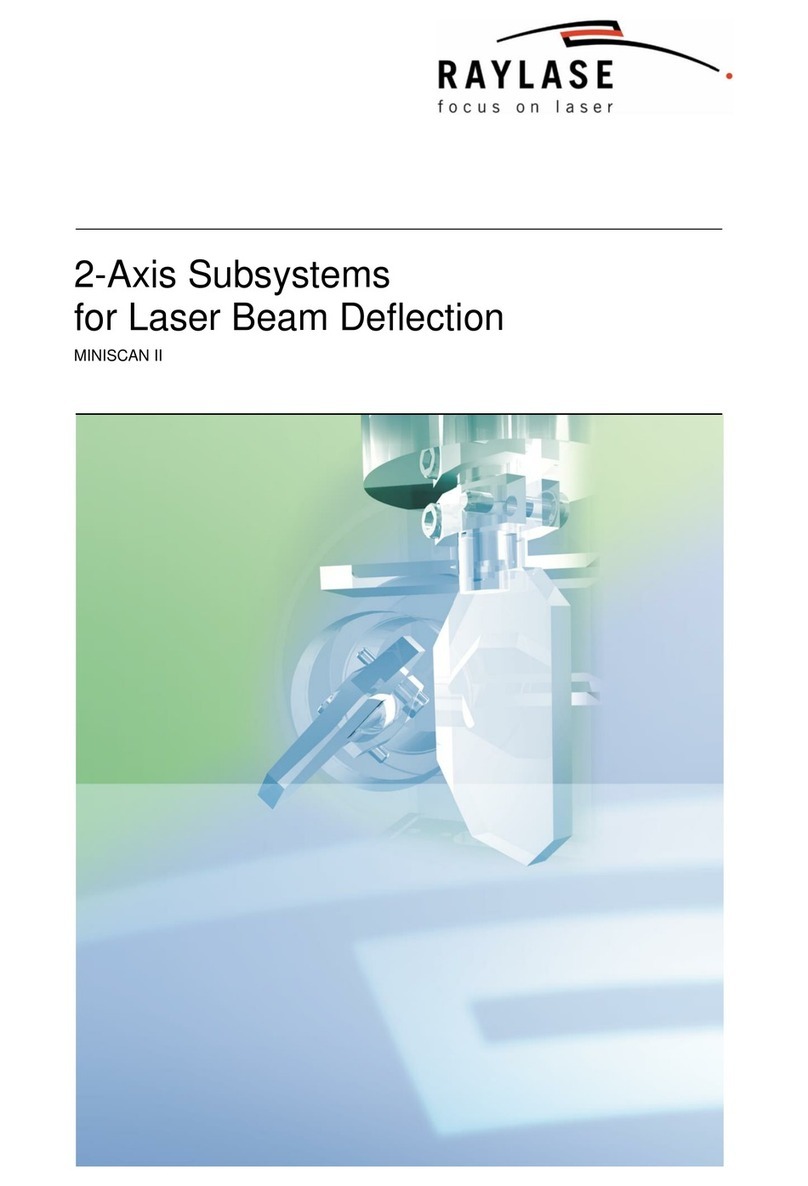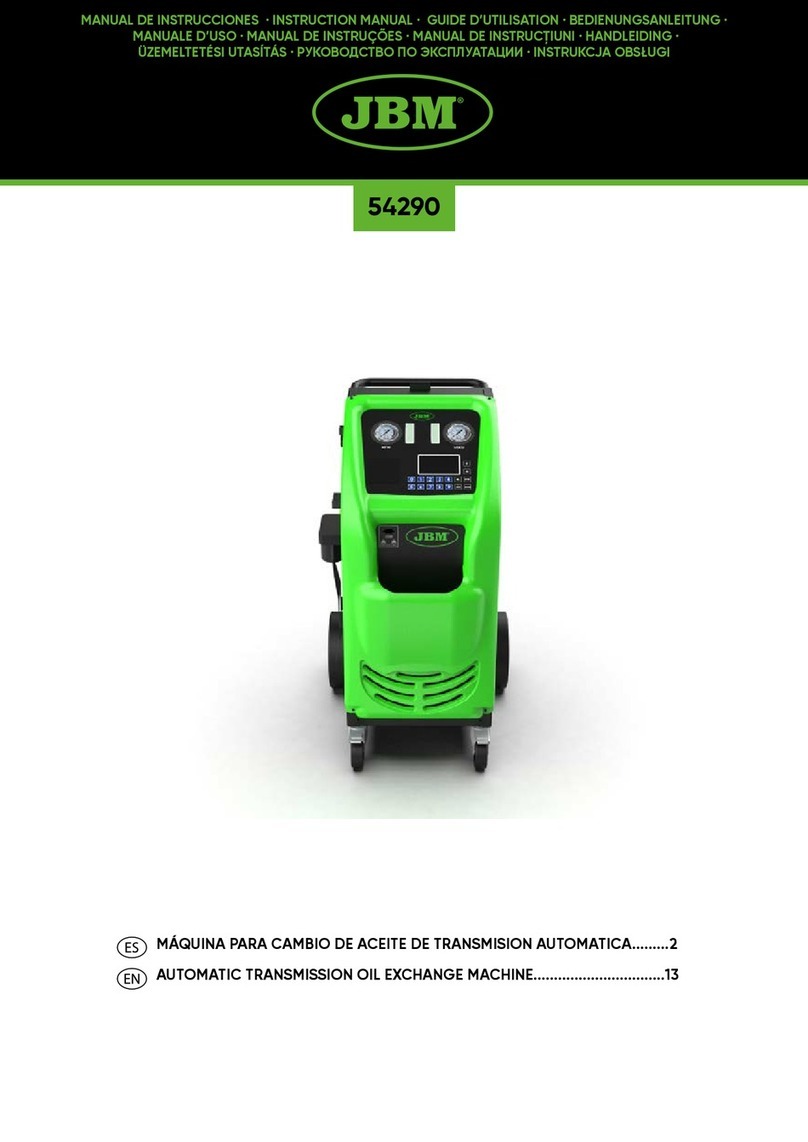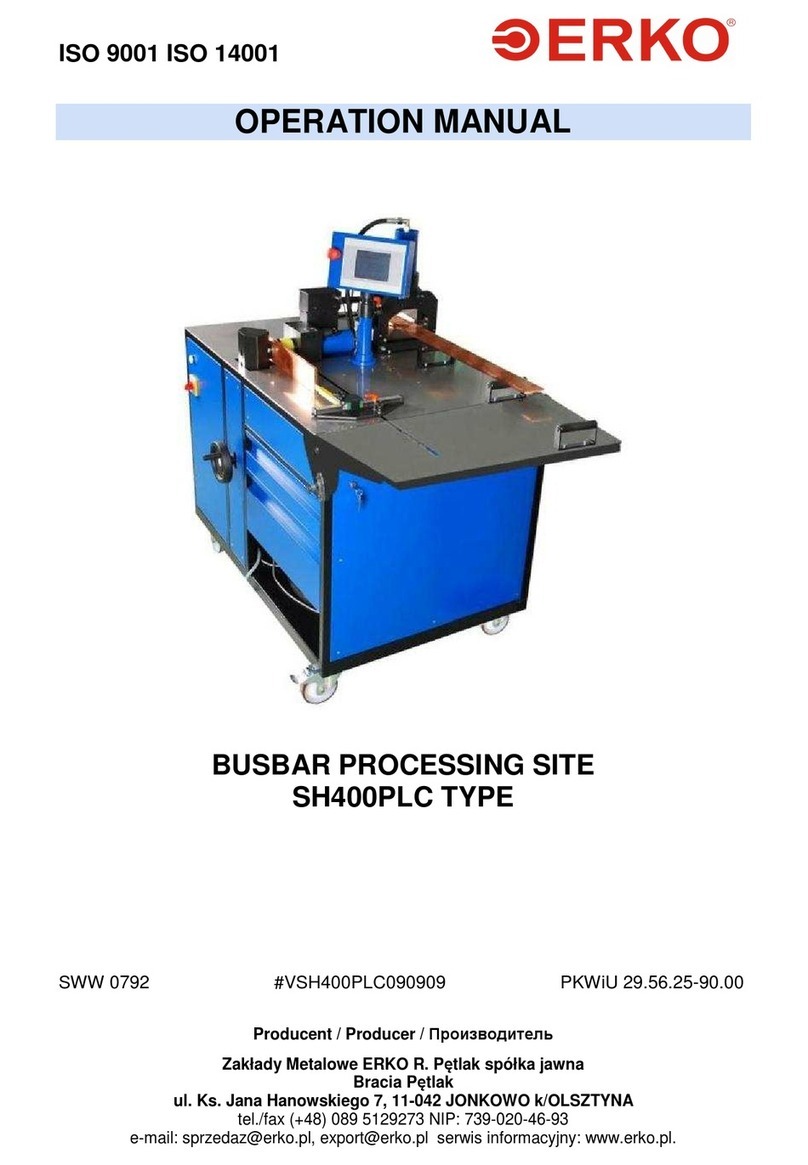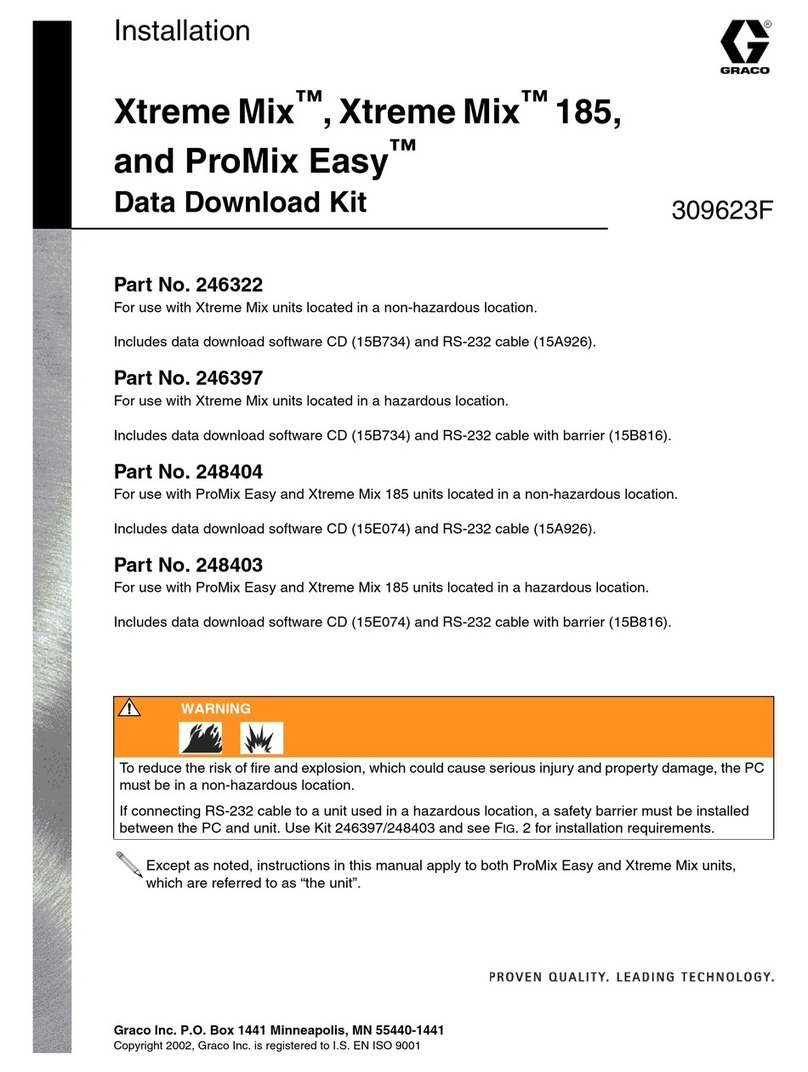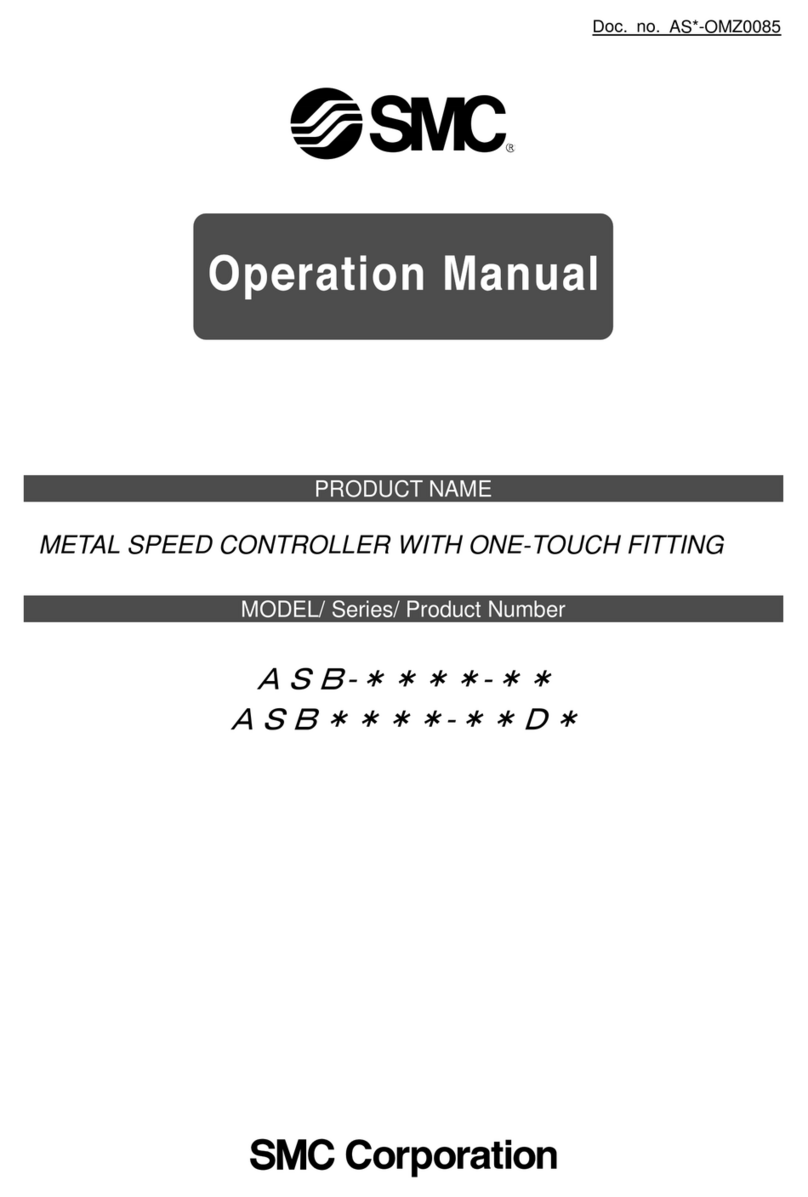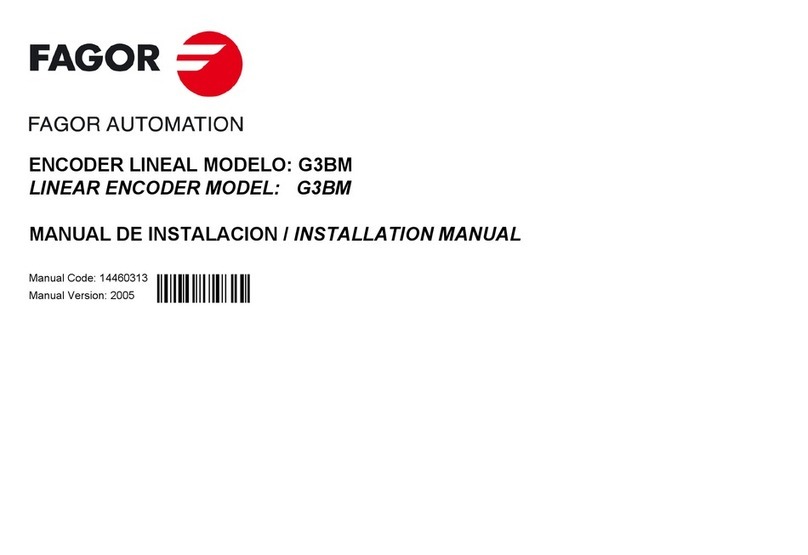TLV SS3N User manual

172-65119MAJ-03 (SS3/SS5) 25 February 2014 ISO 9001/ ISO 14001
Manufacturer
Kakogawa, Japan
is approved by LRQA LTD. to ISO 9001/14001
Free Float Steam Trap
SS3N / SS3V
SS5N / SS5V
SS5NH / SS5VH
Copyright © 2014 by TLV CO., LTD.
All rights reserved

1
Contents
Introduction ........................................................................ 1
Safety Considerations ........................................................ 2
Checking the Piping ........................................................... 4
Operation ........................................................................... 5
Specifications ..................................................................... 6
Configuration...................................................................... 6
Installation .......................................................................... 7
Maintenance....................................................................... 8
Troubleshooting ................................................................. 9
Product Warranty ............................................................. 10
Option............................................................................... 11
Introduction
Thank you for purchasing the free float steam trap.
This product has been thoroughly inspected before being shipped from the
factory. When the product is delivered, before doing anything else, check the
specifications and external appearance to make sure nothing is out of the
ordinary. Also be sure to read this manual carefully before use and follow the
instructions to be sure of using the product properly.
This free float steam trap uses a precision-polished float and three-point support
for the valve body. With no hinges or levers, the trap automatically continuously
discharges condensate, preventing it from collecting. The three-point seating for
the valve body supports the precision-polished float securely at three points and
ensures a high degree of sealing for even minute quantities of condensate.
If detailed instructions for special order specifications or options not contained in
this manual are required, please contact for full details.
This instruction manual is intended for use with the model(s) listed on the front
cover. It is necessary not only for installation, but for subsequent maintenance,
disassembly/reassembly and troubleshooting. Please keep it in a safe place for
future reference.
172-65119MAJ-03 (SS3/SS5) 25 Feb 2014

2
Safety Considerations
Read this section carefully before use and be sure to follow the instructions.
Installation, inspection, maintenance, repairs, disassembly, adjustment and valve
opening/closing should be carried out only by trained maintenance personnel.
The precautions listed in this manual are designed to ensure safety and
prevent equipment damage and personal injury. For situations that may
occur as a result of erroneous handling, three different types of cautionary
items are used to indicate the degree of urgency and the scale of potential
damage and danger: DANGER, WARNING and CAUTION.
The three types of cautionary items above are very important for safety: be
sure to observe all of them as they relate to installation, use, maintenance
and repair. Furthermore, TLV accepts no responsibility for any accidents or
damage occurring as a result of failure to observe these precautions.
Symbols
Indicates a DANGER, WARNING or CAUTION item.
DANGE
R
Indicates an urgent situation which poses a threat of death or
serious injury
WARNING Indicates that there is a potential threat of death or serious injury
CAUTION
Indicates that there is a possibility of injury or equipment / product
damage
CAUTION
Install properly and DO NOT use this product outside the
recommended operating pressure, temperature and other
specification ranges.
Improper use may result in such hazards as damage to the product or
malfunctions that may lead to serious accidents. Local regulations
may restrict the use of this product to below the conditions quoted.
DO NOT use this product in excess of the maximum operating
pressure differential.
Such use could make discharge impossible (blocked).
Take measures to prevent people from coming into direct
contact with product outlets.
Failure to do so may result in burns or other injury from the discharge
of fluids.
When disassembling or removing the product, wait until the
internal pressure equals atmospheric pressure and the surface
of the product has cooled to room temperature.
Disassembling or removing the product when it is hot or under
pressure may lead to discharge of fluids, causing burns, other injuries
or damage.
Safety considerations continued on next page.
172-65119MAJ-03 (SS3/SS5) 25 Feb 2014

3
Be sure to use only the recommended components when
repairing the product, and NEVER attempt to modify the product
in any way.
Failure to observe these precautions may result in damage to the
product and burns or other injury due to malfunction or the discharge
of fluids.
CAUTION
Use only under conditions in which no freeze-up will occur.
Freezing may damage the product, leading to fluid discharge, which
may cause burns or other injury.
Use only under conditions in which no water hammer will occur.
The impact of water hammer may damage the product, leading to fluid
discharge, which may cause burns or other injury.
172-65119MAJ-03 (SS3/SS5) 25 Feb 2014

4
Checking the Piping
Use only under conditions in which no water hammer will occur. The
impact of water ham mer may damage the product, leading to fluid
discharge, which may cause burns or other injury.
CAUTION
Check to make sure that the pipes to be connected to the trap have been installed
properly.
1. Is the pipe diameter suitable?
2. Is the piping where the trap is to be installed horizontal (SS3N / SS5N / SS5NH) or
vertical (SS3V / SS5V / SS5VH)?
3. Has sufficient space been secured for maintenance?
4. Have isolation valves been installed at the inlet and outlet? If the outlet is subject to
back pressure, has a check valve (TLV-CK) been installed?
5. Is the inlet pipe as short as possible, with as few bends as possible, and installed
so the liquid will flow naturally down into the trap?
6. Has the piping work been done correctly, as shown in the figures below?
Requirement Correct Incorrect
Install catchpot with the
proper diameter.
Diameter is too small.
Make sure the flow of
condensate is not
obstructed.
Diameter is too small and
inlet protrudes into pipe
interior.
To prevent rust and scale
from flowing into the trap, the
inlet pipe should be
connected 25 – 50 mm (1 – 2
in) above the base of the
T-pipe.
Rust and scale flow into the
trap with the condensate.
When installing on the blind
end, make sure the flow of
condensate is not
obstructed.
Condensate collects in the
pipe.
172-65119MAJ-03 (SS3/SS5) 25 Feb 2014

5
Operation
Principles of air and condensate discharge:
1. Start-up Air and Cold Condensate
Discharge
At start-up, before steam is supplied, the
system is cold and the bimetal air vent strip
is expanded, holding the float off of the
orifice. This allows for the rapid discharge
of air and cold condensate through the
orifice when steam is first supplied to the
system. After the discharge of initial air and
cold condensate, the heat of the inflowing
steam and condensate cause the bimetal
air vent strip to contract.
2. Condensate Discharge
As steam is supplied, condensate flow
begins. The rising condensate level causes
the float to rise due to buoyancy, opening
the orifice and allowing condensate to be
discharged.
3. Closed Position
When the condensate flow rate decreases,
the float falls, closing off the orifice
opening. A water seal is maintained at all
times over the orifice to prevent steam loss.
Air
Steam
Condensate
172-65119MAJ-03 (SS3/SS5) 25 Feb 2014

6
Specifications
Install properly and DO NOT use this product outside the recommended
operating pressure, temperature and other specification ranges.
Improper use may result in such hazards as damage to the product or
malfunctions which may lead to serious accidents. Local regulations
may restrict the use of this product to below the conditions quoted.
CAUTION
DO NOT use this product in excess of the maximum operating pressure
differential; such use could make discharge impossible (blocked).
CAUTION
Use only under conditions in which no freeze-up will occur. Freezing
may damage the product, leading to fluid discharge, which may cause
burns or other injury.
CAUTION
Refer to the product nameplate for detailed specifications.
SS3N / SS5N / SS5NH SS3V / SS5V / SS5VH
Valve No.**
Serial Number
Model
Nominal
Diameter
Maximum
Allowable
Pressure*
Maximum
Operating
Temperature
Maximum
Allowable
Temperature
(TMA)*
Maximum
Differential
Pressure
Maximum
Allowable
Pressure*
Maximum
Operating
Temperature
Maximum
Allowable
Temperature
(TMA)*
Valve No.**
Serial
Number
Maximum
Differential
Pressure
*Maximum allowable pressure (PMA) and maximum allowable temperature (TMA) are
PRESSURE SHELL DESIGN CONDITIONS, NOT OPERATING CONDITIONS.
**Valve No. is displayed for products with options. This item is omitted from the nameplate when
there are no options.
Configuration
SS3N / SS5N / SS5NH SS3V / SS5V / SS5VH
No. Name No. Name No. Name
1 Body 4 Guide 7 Float
2 Inner Cover 5 Screen 8 Name Plate
3 Socket / Flange 6 Air Vent Strip (bimetal) 9 Orifice
NOTE: A specialized stainless steel insulation cover with ceramic fiber inlay is included with
the SS3N and SS3V.
172-65119MAJ-03 (SS3/SS5) 25 Feb 2014

7
Installation
Install properly and DO NOT use this product outside the recommended
operating pressure, temperature and other specification ranges.
Improper use may result in such hazards as damage to the product or
malfunctions which may lead to serious accidents. Local regulations
may restrict the use of this product to below the conditions quoted.
CAUTION
Take measures to prevent people from comin
g
into direct contact with
product outlets. Failure to do so may result in burns or other injury from
the dischar
g
e of fluids.
CAUTION
Installation, inspection, maintenance, repairs, disassembly, adjustment and valve
opening/closing should be carried out only by trained maintenance personnel.
1. Before installation, be sure to remove all protective seals.
2. Before installing the product, blow out the inlet piping to remove any piping scraps,
dirt and oil. Close the inlet valve after blowdown.
3. Install the product so that the arrow on the body is pointing in the direction of flow.
4. The trap should be inclined no more than 5° in any plane.
5. Install a condensate outlet valve and outlet piping.
6. Open the inlet and outlet valves and check to make sure that the product functions
properly.
If there is a problem, determine the cause using the “Troubleshooting” section in this manual.
Tolerance Angle for Installation - 5°
(SS3N / SS5N / SS5NH)
Tolerance Angle for Installation - 5°
(SS3V / SS5V / SS5VH)
Install on a horizontal pipe with the nameplate
facing upwards and the arrow pointing in the
direction of flow
Install on a verticle pipe with the inlet on top,
the outlet on the bottom and the arrow
pointing in the direction of flow
NOTE: For products with socket weld connections the insulation cover shipped with the
product should be attached after the products is welded onto the pipe and after its
surface has cooled to room temperature.
For attaching the insulation cover, see the instruction below.
<How to attach the insulation cover>
Short tape
Long tape
Step 1. Wrap the included sealing tape around the inlet and outlet
connection at each end of the trap (3 turns for each).
Step 2. Fit the two halfshells of the insulation cover around the trap
until the 5 tabs and 5 holes are perfectly aligned.
A nameplate is affixed to the insulation cover. Make sure
that direction of the arrow on the nameplate matches the
direction of condensate flow.
Step 3. Using the included aluminum tape, seal the area where the
halfshells meet. Then wrap 3 more turns of sealing tape over
the top of the sealing tape applied in step 1.
172-65119MAJ-03 (SS3/SS5) 25 Feb 2014

8
Maintenance
Take measures to prevent people from coming into direct contact with
product outlets. Failure to do so may result in burns or other injury from
the discharge of fluids.
CAUTION
Be sure to use only the recommended components when repairing the
product, and NEVER attempt to modify the product in any way. Failure to
observe these precautions may result in damage to the product or burns
or other injury due to malfunction or the discharge of fluids.
CAUTION
Operational Inspection
A visual inspection of the following items should be done on a daily basis to determine
whether the trap is operating properly or has failed. Periodically (at least biannually) the
operation should also be checked by using diagnostic equipment such as a
stethoscope, thermometer, TLV Pocket TrapMan or TLV TrapMan.
If the trap should fail, it may cause damage to piping and equipment, resulting in faulty
or low quality products or losses due to steam leakage.
Normal : Condensate is discharged continuously, together with flash steam,
and the sound of flow can be heard. If there is very little
condensate, there is almost no sound of flow.
Blocked
(Discharge Impossible)
: No condensate is discharged. The trap is quiet and makes no
noise, and the surface temperature of the trap is low.
Blowing : Live steam continually flows from the outlet and there is a
continuous metallic sound.
Steam Leakage : Live steam is discharged through the trap outlet together with
condensate, accompanied by a high-pitched sound.
(When conducting a visual inspection, flash steam is sometimes mistaken for steam leakage.
For this reason, the use of a steam trap diagnostic instrument [such as TLV TrapMan if appropriate]
in conjunction with the visual inspection is highly recommended.)
Flash Steam Live Steam Leakage
White jet containing
water droplets
Clear, slightly bluish jet
172-65119MAJ-03 (SS3/SS5) 25 Feb 2014

9
Troubleshooting
When disassembling or removing the product, wait until the internal
pressure equals atmospheric pressure and the surface of the product
has cooled to room temperature. Disassembling or removing the
product when it is hot or under pressure may lead to discharge of fluids,
causing burns, other injuries or damage.
CAUTION
If the trap fails to operate properly, use the following table to locate the cause and
remedy.
Problem Cause Remedy
The trap operating pressure
exceeds the maximum specified
pressure or there is insufficient
pressure differential between the
trap inlet and outlet
Compare specifications and
actual operating conditions
The piping is clogged with rust and
scale
Clean the piping
The capacity of the trap is
insufficient
Compare specifications and
actual operating conditions
No condensate is
discharged (blocked) or
discharge is poor
Steam-locking has occurred Perform a bypass blowdown or
close the trap inlet valve and
allow the trap to cool
Improper installation orientation Correct the installationSteam is discharged or
leaks from the outlet
(blowing) (steam leakage) Trap vibration Lengthen the inlet piping and
fasten it securely
Steam is leaking from a
place other than the outlet
The outside of the trap has
sustained damage
Replace with a new trap
Float becomes damaged Water hammer has occurred Study and correct the piping
NOTE: SS3N SS3V / SS5N SS5V / SS5NH SS5VH steam traps are of all-welded, single unit
construction, so they cannot be repaired.
172-65119MAJ-03 (SS3/SS5) 25 Feb 2014

10
Product Warranty
1. Warranty Period
One year following product delivery.
2. Warranty Coverage
TLV CO., LTD. warrants this product to the original purchaser to be free from
defective materials and workmanship. Under this warranty, the product will
be repaired or replaced at our option, without charge for parts or labor.
3. This product warranty will not apply to cosmetic defects, nor to any product
whose exterior has been damaged or defaced; nor does it apply in the
following cases:
1) Malfunctions due to improper installation, use, handling, etc., by other
than TLV CO., LTD. authorized service representatives.
2) Malfunctions due to dirt, scale, rust, etc.
3) Malfunctions due to improper disassembly and reassembly, or
inadequate inspection and maintenance by other than TLV CO., LTD.
authorized service representatives.
4) Malfunctions due to disasters or forces of nature.
5) Accidents or malfunctions due to any other cause beyond the control of
TLV CO., LTD.
4. Under no circumstances will TLV CO., LTD. be liable for consequential
economic loss damage or consequential damage to property.
* * * * * * *
For Service or Technical Assistance:
Contact your representative or your regional office.
Manufacturer
CO., LTD.
881 Nagasuna, Noguchi
Kakogawa, Hyogo 675-8511 JAPAN
Tel: 81–(0)79–427–1800
172-65119MAJ-03 (SS3/SS5) 25 Feb 2014

172-65119MAJ-03 (SS3/SS5) 25 Feb 2014
11
Option
The insulation cover (RK5) for the SS5N / SS5V / SS5NH / SS5VH is available as an
option.
Install according to the following steps.
1. Allow the trap to cool to ambient temperature.
2. Open the cover along the Velcro strip.
3. Place cover evenly around the body with the arrow on the cover facing the same
direction as the arrow on the trap body.
4. Reattach the Velcro strip.
5. Secure the ends of the cover around the trap inlet and outlet with the binding strips.
15 (
5
/
8
)
250 (10) 100 (4)
φ50 (2)
100 (4)
100 (4)
200 (8)
150 (6)
70 (2
3
/
4
)
220 (8
11
/
16
)
6 (
1
/
4
)
(Insulation Cover) Velcro Strip
(Binding Strip 2pc.)
t: 0.2 (0.0079)
Unit: mm (in)
This manual suits for next models
5
Table of contents
Other TLV Industrial Equipment manuals
Popular Industrial Equipment manuals by other brands
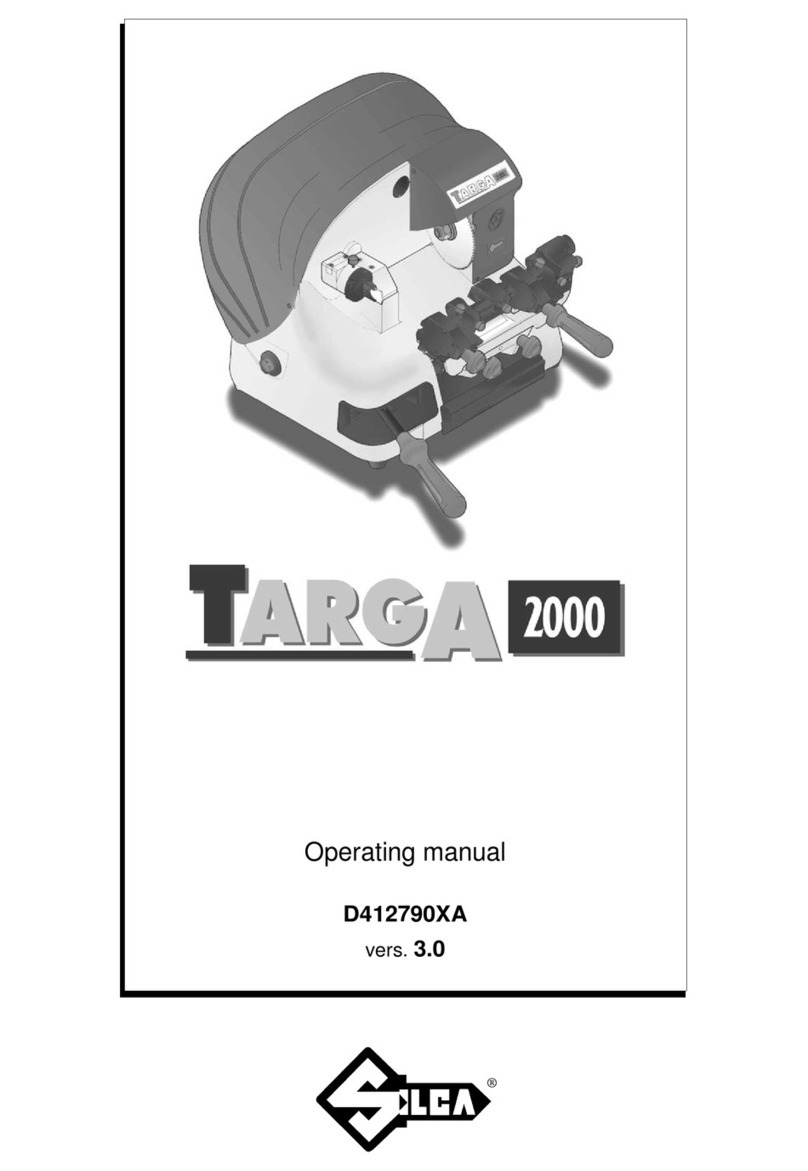
Silca
Silca TARGA 2000 operating manual
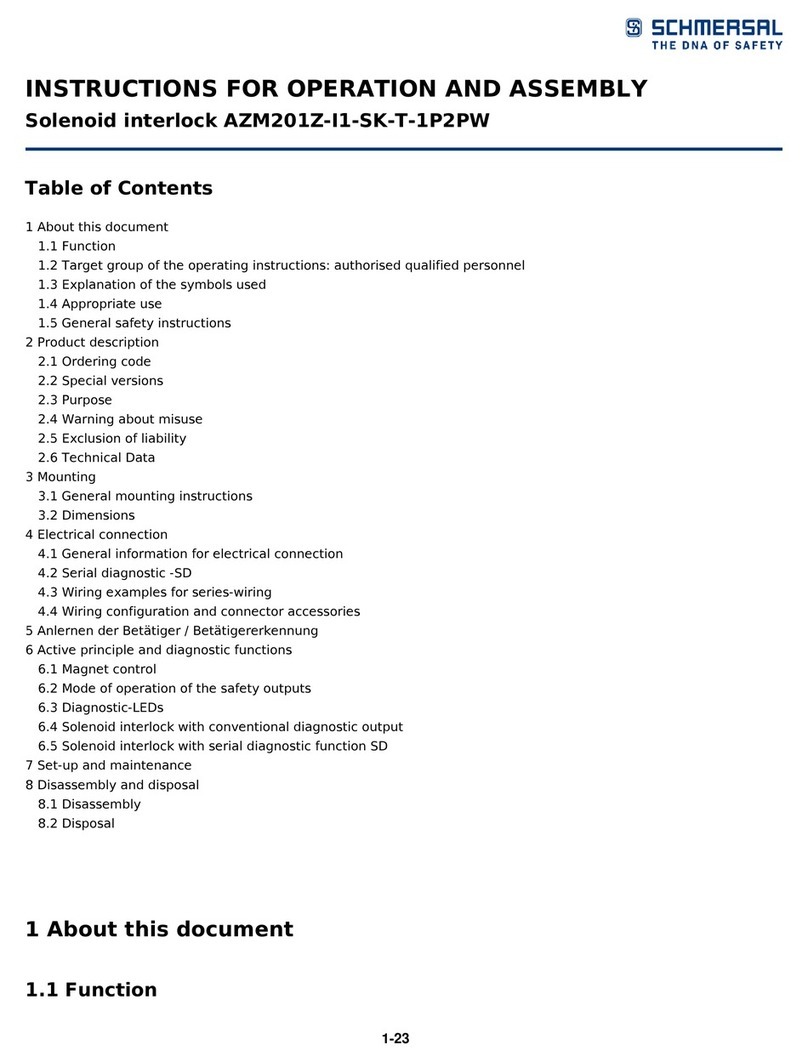
schmersal
schmersal AZM201Z-I1-SK-T-1P2PW Instructions for operation
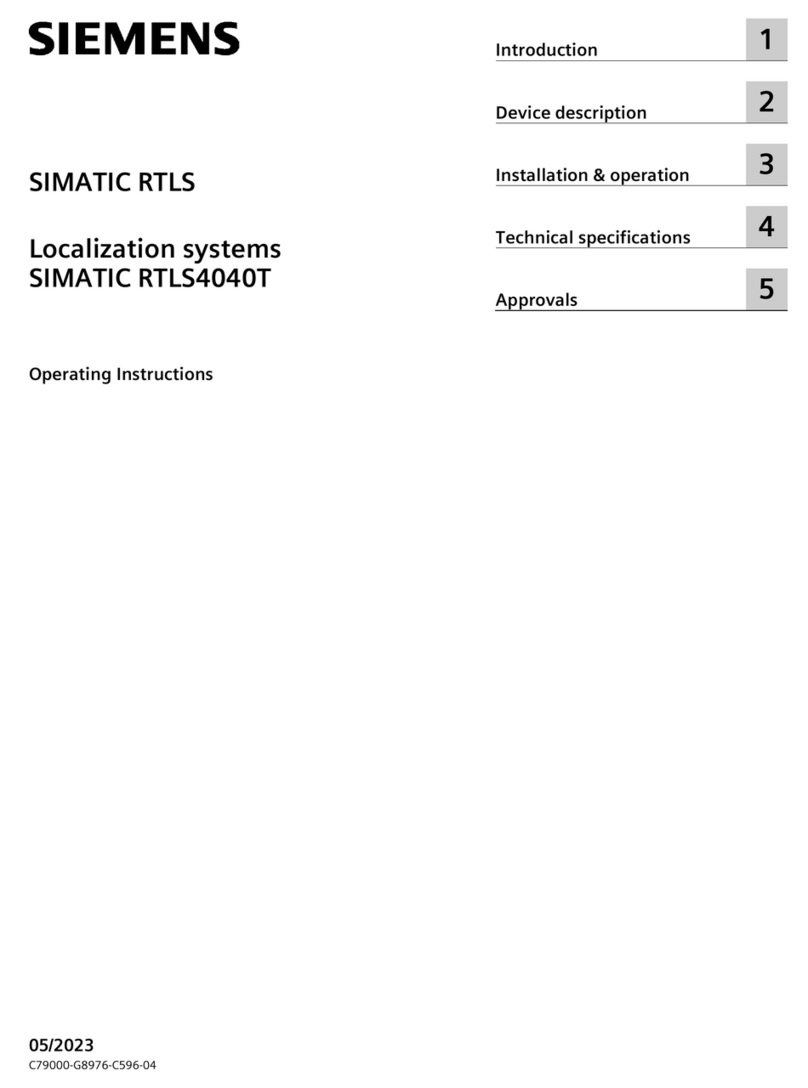
Siemens
Siemens SIMATIC RTLS4040T operating instructions
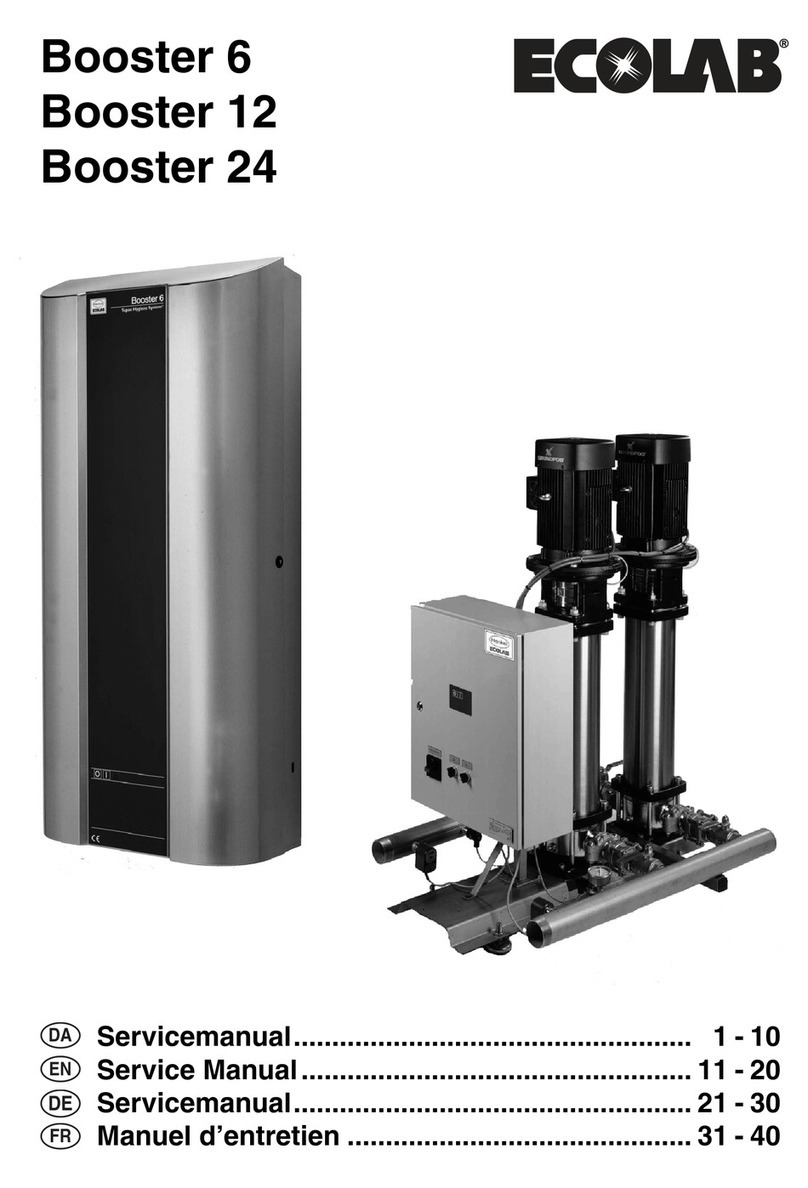
Ecolab
Ecolab Booster 6 Service manual
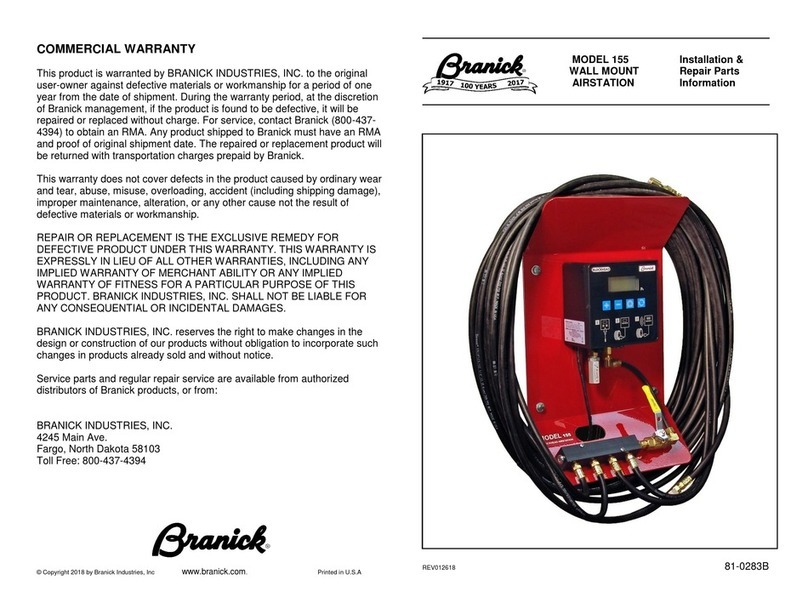
Branick
Branick 155 Installation & Repair Parts Information
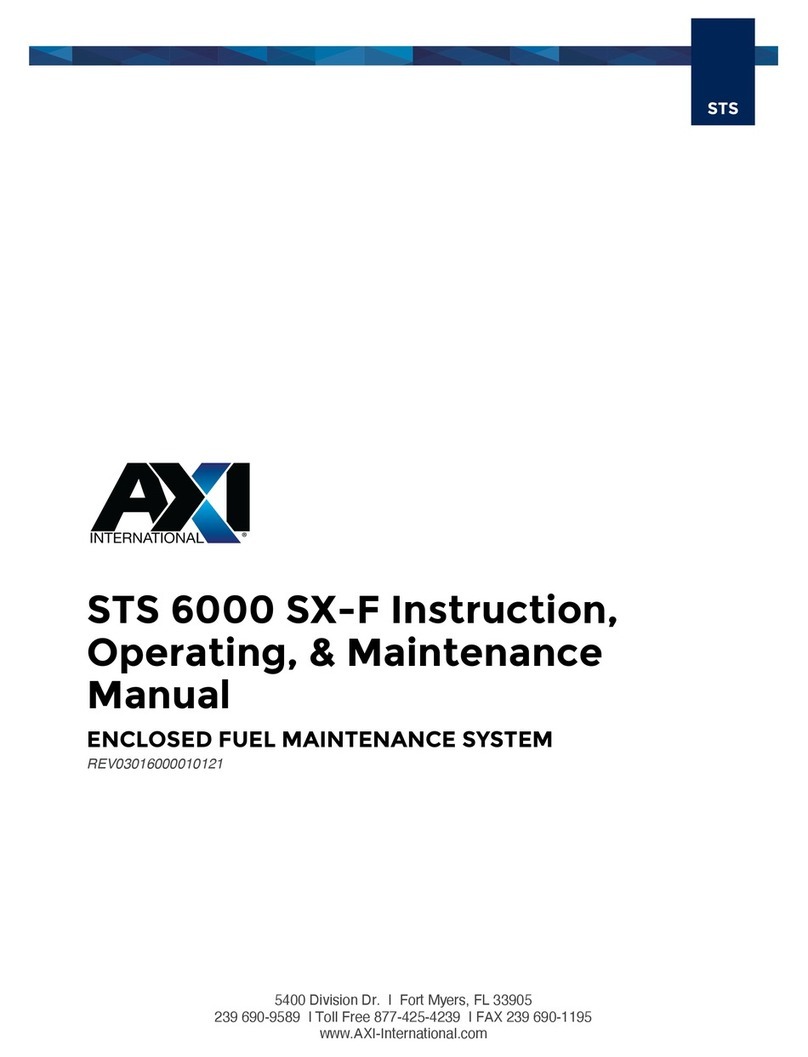
Axi
Axi STS 6000 SX-F INSTRUCTION, OPERATING, & MAINTENANCE MANUAL
